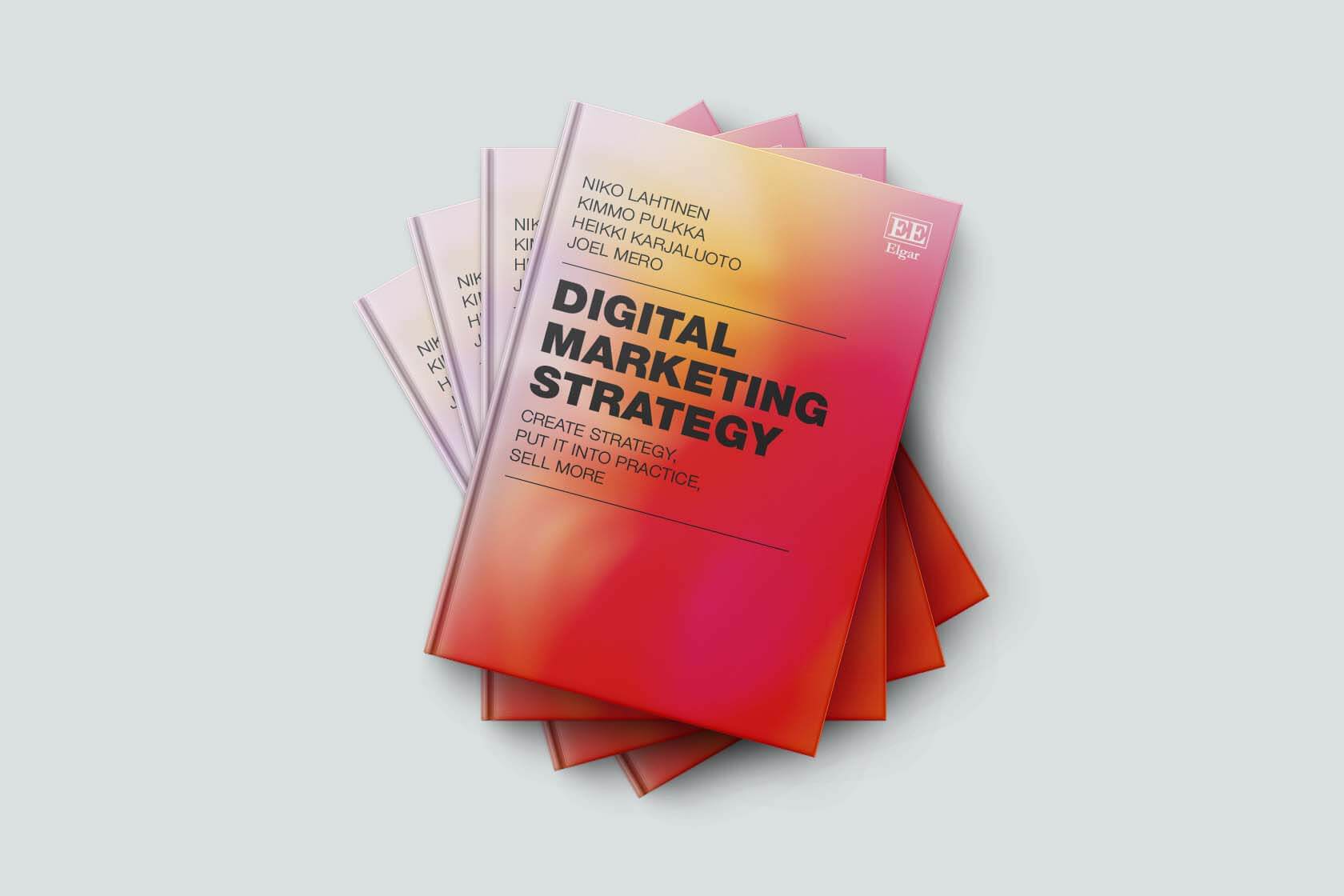A buyer personality is the cornerstone of your entire digital marketing, as marketing based on them concretely concretizes the “know your customers” thinking as a functional whole. Digital marketing places a lot of emphasis on numeral values, such as clicks, impressions and conversions, but every number is driven by a person.
With a buyer persona, you can learn to understand the customers behind the metrics and build marketing that is addressing them in the right way. You can find out why people behave like they do at certain stages of the purchase process and do targeted advertising at the right stage.
Test buyer personalities, as your marketing angle may be completely wrong. With the help of a buyer persona, you do marketing that is built around your customers’ purchasing process and support their decision-making throughout the funnel’s journey from a data seeker to a loyal customer.
In this writing, I will go through why buyer personalities are a cornerstone of all digital marketing, how to build them, and how we at SDM use buyer personalities in our MRACE model marketing.
Why create buyer personality systematically?
It is recommended for your company to build a buyer persona for the simple reason that you can steer the purchase process of your most important customers in the direction that you want. In this case, marketing is not a loose action, and you can expect better returns from your advertising euros, because the advertising is accurately targeted.
Without buyer personalities, the angle of entry and marketing communication of your marketing can be completely wrong. Therefore, analyzing the buyer personality helps to build the marketing input angle in the desired direction. I have created buyer personalities for B2B industrial companies, media, and consumer online stores. There is no industry where buyer personalities do not work unless your business is really meant to sell “everything to everyone.”
Buyer personalities do not stay at the top level of marketing because they do not allow your customers to feel that your marketing is stale or interrupting. When marketing responds to a customer’s concerns and needs, it is perceived as helping – instead of empty pitches.
A simple example of helpful marketing is a blog post for a data seeker that provides answers to customer reflections on why indoor air quality is poor without the text addressing the indoor air quality products you sell.
Buyer personalities can be thought of as a map that helps you understand the overall marketing and customer use. When buyer behavior is known as a step-by-step approach, the marketing entity can be built to support buyer decision-making.
At the heart of buyer persona is the desire to understand your customers better. Once the understanding is broken down into the buyer persona format, you will use your marketing to help the customer solve the problem they have experienced and move them towards the solution they want with your products and services.
For this reason, our personalities at SDM are the heart of the marketing entity and the body of our entire MRACE model. Buyer personalities give you a clear plan of what marketing steps you need to take at each stage of the buying process to win customers for yourself.
How do I create buyer personalities comprehensively?
A buyer persona is often thought of as a list of dream customer features. In reality, the buyer persona process is much more analytical.
Many have an image of the buyer persona presented on one page, “Mattina, 36 years old, works in an office”. Matti’s picture, hobbies and interests are listed in a page-long buyer personal document. But the most important thing is missing if buyer personalities are built only as a demographic overview.
When making a buyer personality, it is not necessary to answer the question “What?” but to the question “Why?”. Only through this will you get closer to understanding the customer’s thinking process.
At SDM, we build buyer personalities based on a multi-step process. We create buyer personalities according to five critical stages of the purchasing process, which visualize how the customer’s purchase process is progressing and which things they think about at what point and with whom.
When making a buyer person, the answer is not “what” but “why”. A buyer persona is more than a list of demographics.
Buyers plays a particularly important role in content marketing and inbound marketing.
Five critical levels of buying
By analyzing the purchase path, we get the starting point to make marketing the kind that convinces the right buyer personality in the best way. When analyzing buyer personalities, we also select those who have comprehensive knowledge of the purchasing process – we interview salespeople, the marketing team and, if necessary, customers.
Purchase levels are originally from Adele Revella’s book Buyer Personas.
1. Births of willingness to buy
How did the authors (drivers) give rise to the original need for purchase? Why does the customer want to invest time and money to buy a solution?
Drivers are the most influential factor in the customer’s need to buy. For example, one person wants to buy a kettlebell to improve their back pain, another to increase muscle mass and a third to improve their fitness holistically.
Although the product is the same, people have different reasons to buy it. Therefore, we cannot communicate to different individuals using the same driver, because everyone’s need is different. The kettlebell is a very simple example, so the more complex your product is, the more accurately the drivers of the buyer personalities should be clarified.
At this point, we will also find out what the main reason is for the customer to decide to invest time and money in what you offer as a company. Why did the customer start their purchase process only now, has the need to buy been around for a long time? What is the starting point for the customer’s purchase needs, on the basis of which they decided to start comparing and retrieving information, even though the problem (e.g. that hip pain) has been around for a long time.
The information collected at this point is useful especially at the beginning of the customer’s purchase path, because these are factors that get your customers moving – through digital marketing, for example, by clicking on an article that gives you tips for increasing muscle mass.
2. Success factors
Which results does the customer want to achieve with your solution?
Which risks do they want to eliminate?
At this point, we will find out what kind of results the customer wants and what risks they want to eliminate. These can be both personal and organizational reasons. For example, when acquiring a kettlebell, the customer may want to get rid of back pain once and for all and be able to move in such a way that there is no daily pain. Therefore, they are looking for a product with which they believes they have achieved these results and eliminates the risk of worsening back pain.
In other words, if you are not marketing the things your customer is looking for at this point, they are looking for another product. So, if we do not tell you that the kettlebell helps with back pain, the customer will find a similar product that promises to help them.
At this point in the marketing angle, it is worth highlighting the benefits that appeal to your marketing target audience the most.
3. Buying barriers
What appears to the customer as buying barriers?
From any website that is poorly converging, the barriers to purchase can consist of poorly made communication or customer prejudice. It is therefore essential to find out what the barriers to purchase are and why they have become so.
It is important to note that there may also be misconceptions about a product or service. The customer may have a strong impression that the product is “similar to 10 years ago”, or if they do not receive the information they want about the product’s properties directly from your website, it can cause them to look for a solution elsewhere.
In order to tackle barriers to purchase, new content must be produced on your website at all times to reverse the buying barriers analysed. In addition, other people’s reference stories are a good assurance at this point.
4. Purchase path
Everyone participates in decision-making and at what stages? Who can block a purchase decision?
The purchase path describes who all influence the purchase decision. Here, the buying process is treated as if from a “behind-the-scenes” perspective: who identified the problem and the need to buy, who set out to push the matter, and who was involved in the final decision?
When we know who is involved in decision-making, we can create the necessary content to convince, for example, a CFO who thinks about it from a completely different point of view than the person who experiences the problem on a daily basis. This type of content is particularly pronounced in B2B marketing, where dozens of people can participate in decision-making.
Social media communication also acts as a major motive in the purchasing path in consumer marketing. For example, if a well-known influencer has attracted the consumer’s interest in a new kettlebell, they can be thought of as influencing the buying path. In the same way, neighbours’ opinions on the new roof are strong influences on the buying path. What is important is to understand that few people make a purchase decision independently and no one in a vacuum.
5. Purchasing criteria
What or what factors were the ultimate reasons why the buyer person chose this particular solution out of all the competing solutions?
The purchasing criteria are included when the customer has eliminated three potential service providers from different options, for example. Even if the product is identical to other products to be compared, the decisive purchasing criterion can consist of even a small thing. It can be active communication in the B2B store, an email received at the right time, or free delivery in the online store.
With the analysis of purchasing criteria, we can develop not only marketing, but also the sales process and even the product itself.
How do I choose the marketing input angle based on buyer personalities?
The marketing of a buyer persona can be built in such a way that it guides the customer on their purchase path.
As the same product or service can be purchased for a variety of reasons, similar marketing messages do not work for every buyer persona. You should not use the same angle of communication for a buyer persona who knows your product through and through and someone who has only just identified their problems and does not even know that your product is the solution. Therefore, the core message of marketing must be developed according to the stage of the purchase path.
For example, with a kettlebell, a buyer persona might think that there are no results in the back workout because the weight of the kettlebell is wrong. In reality, the reason is in the wrong kind of technology, which the buyer person, however, is not aware of. In this case, the message angle is suitable for “this way you can get better results in your workout” than “this way you can fix your technique in training”.
In the event of a sale, the seller is able to continuously answer the customer’s questions and change their behaviour and sales pitch according to the customer’s product knowledge and nature. In digital marketing, changes cannot be made as quickly, but it must take the customer’s different needs into account in advance with the help of the buyer persona.
It is important to know the customer’s purchase process in accordance with the five points mentioned above and to be able to answer their questions and concerns at the right time so exhaustively that they do not become obstacles for the purchase. For this reason, marketing should also take into account the degree of product awareness of the buyer persona, which I will go through next.
Product awareness levels as part of the marketing angle
1. Fully aware
A fully aware is a hot lead or a non-button customer. The customer knows your product or service and wants it but has not yet made a purchase. The reasons can be found in the buying barriers, such as poor websites, difficult order instructions, unavailability, or the fact that the customer feels that they have more important things on their priority list.
At this point, you can make it easier to buy, for example, with conversion optimization and addressable content. In addition, remarketing on social media channels to site visitors is effective at this stage.
2. Product aware
The product-aware customer knows your product or service, but does not believe it is suitable for them. This can be due to, for example, misconceptions, bad past experiences, weak content on websites or expensive prices.
Barriers to product-aware purchasing should be identified and removed. If the only obstacle to the purchase is the price, you need to be told how the future with the product will pay for itself many times over.
3. Outcome-aware-
The buyer persona knows that they want a healthy back, but does not know how to achieve it. At this point, the customer should be taught how the product or service you offer helps your customer reach the desired outcome.
4. Problem-aware
A problem-aware customer knows their problem and its symptoms but does not know that there is a solution to it. The problem can range from back pain to identifying a bad camera tripod or coughing automation in an industrial production.
The corner of marketing and content should be the problem experienced by the customer and the symptoms caused by the problem. The more accurately you describe the symptoms, the more likely the customer is to believe that you have a solution for them.
In content, the most important thing is to show an understanding of the customer’s problem and only then sell the solution. Therefore, for example, the article “how to speed up the production of your industrial company” works better than the product demonstration page from your new automation machine.
5. Completely ignorant
A completely ignorant customer is the hardest “cold” group in marketing. They do not recognize their problem or notice the symptoms that the problem causes.
The angle of marketing messages and content must be designed so that the customer identifies themselves with the message that comes before them through, for example, paid advertising or email marketing.
When a customer clicks on your site from such an ad, they must be made to identify their problems or the symptoms that result from it. Only then can you start thinking about selling them a solution.
Buyer persona is branding at its best
Once created systematically, a buyer persona also supports all your brand development marketing. The essence lies in the fact that you can attract just the right “dream customers” with your marketing to your business when you know what they value and what the driving factor in their purchase decision is.
Content marketing based on drivers also creates the value of your product or service. It is a very strong positive experience when a buyer persona has embarked on a buying path in such a way that their driver (for example, improving back pain) has travelled along the entire buying path. When they start using the product, they compares their experience with what they have been promised in marketing. If and when a product meets their expectations, the outcome is positive. In this case, the product has sold itself, making it possible to buy it again or recommend it to friends.
Your brand is also evolving according to the kind of customers you have, as they attract people who identify. And branding is all about positioning as the best option for a particular target group of your choice. That is why buyer personalities are at the heart of branding.
Learn more about the digital brand: What is a digital brand strategy?
Content marketing works seamlessly when the purchase path is built on buyer personalities
It is hard to think of strategic content marketing without a buyer personality, which is why the buyer persona is at the heart of all our content marketing. Once we know the customer’s buying process, we can build content around it. And then customers will find the content helpful, not just a useless sales pitch.
At SDM, the content plan is an integral part of buyer persona work. Every time we build buyer personalities for our customer, we also make a content plan that supports their purchase path. As I mentioned above, a buyer persona document is pretty pointless if it is just a list of dream customer features.
The importance of buyer personalities is underlined by the fact that content replaces your seller on your website. Whoever has the best sellers usually sells. It is important to note that while live the seller can change their spike according to the customer’s needs, the content of the website is static. Therefore, they need to be produced continuously and from different angles so that they address the most important questions, concerns and buying barriers.
We cannot change the purchase process, but we can steer it in the right direction with content. In practice, guiding is only possible through the drivers of buyer personalities and the investigation of the purchase path.
Once the driver is known, it can be brought to the forefront of the content intended for that buyer. This is when the buyer person starts to want even more value from your product or service and is not just looking the cheapest price on the market. Customers who buy from you because of the value you generate will also commit to your business much better.
Let’s take an example where one person wants to save on home heating costs and the other wants to reduce their carbon footprint. The need for these two buyer personalities is completely different, but a geothermal heat pump, for example, is the solution for both. Due to the different drivers, two purchase paths need to be built in this case in order to channel the need of the buyers into a desire to buy a geothermal heat pump.
In buyer persona-based marketing, continuous content creation is important because
- Different customers buy based on different drivers, and everyone needs to find engaging content throughout the funnel journey
- Your brand evolves through content marketing
- Purchase paths needs fresh content to support it – alongside evergreen articles
- Different content formats serve different buyers: videos, articles, texts and interactive content all fit in different stages of the purchase path
Buyer persona marketing in our MRACE model
At SDM, we base all our marketing on the MRACE model, which works in each of our marketing channels. With the template, we build purchase paths that turn web page visitors into leads, customers, and recommended regulars.
The collaboration between content marketing and social media advertising is a clear example of how, at best, buyer persona work produces measurable results.
Our MRACE model is based on the five stages of marketing and the targeted marketing measures performed on them. Next, I will introduce a simplified model of how buyer persona-specific content marketing and social media marketing work for us.
Reach marketing attracts the interest of new audiences and target groups. The potential customer flow is directed, for example, from a social media ad to content that is defined for the needs of certain buyer personalities. With reach content, we attract the interest of the target group by talking about the problem for which your service offers a solution.
Content examples on social media in the reach phase: raffles, tests, brand content, influencer marketing.
The purpose of the Act phase is to get the customer to react along the conversion path and perform micro conversions, such as e.g. downloading guides and consuming content. At this point, we we talk about the causes of your target group’s problems and offer solutions to them. The content on your site forms conversion paths that allow an individual visitor to spend a longer period of time on your website and commit to your company.
Examples of content in the Act phase: Downloadable material, articles, newsletter downloads.
The Convert phase, as its name suggests, a conversion, such as contacting a B2B store or buying in a consumer online store. Buyer persona-based marketing makes it easier for the customer to make a purchase decision with rich content, conversion optimization and clear operational prompts. Here, especially, the functionality of content conversion paths is tested.
Convert stage content: product pages, contact pages, campaign pages.
In the Engage phase, your customer commits to your business, becomes a regular customer and a referrer. High customer satisfaction has been built right from the reach phase of the buying path, with content targeted to the right buyers and audiences.
Engage phase marketing: e-mail marketing, remarketing of social media to site visitors, influencer marketing.
It is important that all messages from promotional messages to landing pages are in line with the drivers of the buyer persona. Therefore, advertising ad copy and content need to be produced for different buyer personalities in order to make their purchase path as clear as possible.
Everything is surrounded by Measure, a measurement to measure the effectiveness of marketing activities targeted at buyer personalities.
Also read: Construction of a sales funnel according to the MRACE model

Summary
The reason for the existence of buyer personalities is simple: they allow you to do marketing to help your customer make a purchase at the right message angles without dabbling. That is when your marketing will follow the purchasing process of your most important customers and support their decision-making. At its best, this creates a superior competitive advantage for you.
Without buyer personality work, your marketing is at its worst like a white board that each marketing action colours on top of each other in a different colour. Through the construction of buyer personalities, colours are not an “everything for everything” mix, but the palette has a shade that is addressed to every buyer persona, from broken orange to light lilac.
In our SDM model, buyer persona- and content marketing are an inseparable pair, as good content finds the right shades that each buyer persona is looking for. In addition, buyer persona work helps to get better value for your advertising when the message is targeted in a timely manner at a suitable target group.











